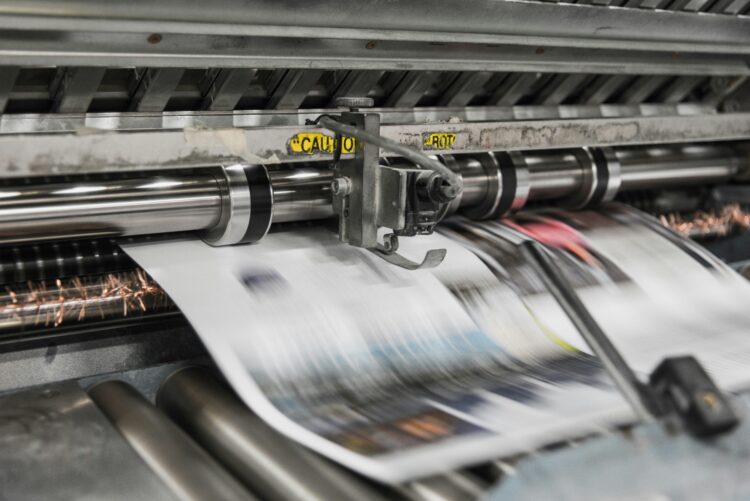It sounds like a straightforward question. But for most founders, creatives, and brand builders, it tends to provoke a moment of silence. Not because there were too many features to count — but because they can’t recall any.
And if there were one or two small mentions, they were likely a result of chance: a friend’s referral, a product roundup, or a rare break in a journalist’s inbox. And still, the real question remains: Did it actually do anything for your business?
This is the media cycle many modern brands find themselves trapped in. One where press is celebrated like a jackpot — rare, exciting, temporary — and then forgotten almost as quickly as it appeared. You land a feature, share it on Instagram, friends hype you up, and then the noise fades. A few link clicks. Maybe one or two orders. And that’s it. Back to the drawing board.
So why are so many founders still chasing something that rarely moves the needle?
The Myth of Press as Proof
There’s a deep-seated belief in the branding world that visibility equals value. That to be seen — even briefly — in a respected outlet automatically confers legitimacy. And to some degree, that’s true. Media coverage can open doors. It can provide third-party validation, increase credibility, and help a brand stand out in a noisy landscape.
But when visibility becomes the goal rather than the vehicle, founders start operating from a place of scarcity. They accept crumbs — a tag on someone else’s terms, a one-liner buried in a listicle — and celebrate them like they’ve won the lottery. They post the badge on their website. They move on.
What they don’t do is track it. Or build on it. Or convert that moment of attention into something that lasts.
Press That Doesn’t Stick
The problem isn’t that press doesn’t matter. It’s that most founders treat it like a moment, not a movement. A one-off feature that gets shared, screenshotted, and then disappears into the digital void.
That approach fails to recognize what press actually does well — and what it doesn’t.
Media coverage can introduce a brand. It can shout. It can spotlight. But it rarely tells the full story. It’s not built to. Editors are constrained by space. Writers are expected to remain impartial. Publications are often focused on traffic, trends, or headlines.
So while press might bring eyes, it doesn’t always build depth. It doesn’t hold attention. It doesn’t create a lasting bond between brand and audience.
And if your story is deeply personal — rooted in purpose, mission, or transformation — then a two-paragraph mention won’t do it justice.
The System Wasn’t Designed for You to Win
Let’s be honest: the traditional press cycle wasn’t created to serve small, independent brands. It’s built on access, relationships, gatekeepers, and sometimes luck. And unless you have a seasoned PR team or deep industry connections, you’re likely playing a game where someone else makes the rules.
Even worse, when you do get press, you don’t own it. You can’t edit it. You can’t control the headline, the links, or how the story is framed. You’re a guest in someone else’s space. A feature, not the foundation.
That’s why even the most exciting feature can feel anticlimactic. You spend weeks pitching. You get one yes. You celebrate. And then… nothing changes.
The reason? You’re still building your brand on rented space. You’re still waiting for someone else to validate your work.
From Feature to Foundation
The founders who break out of this loop are the ones who stop chasing press and start creating platforms. They shift from asking for exposure to owning their narrative. They don’t wait to be invited into someone else’s editorial calendar — they build one of their own.
That shift is powerful. Because when you create something yourself — something like a magazine, a podcast, a documentary-style campaign — you don’t just show up. You stand out. You create an immersive space where people can connect with your brand beyond the scroll, the click, or the tagline.
These founders begin to see press not as the end goal, but as part of a broader ecosystem. One where visibility is one piece, and ownership is the engine.
Why the Numbers Matter
So let’s come back to that original question: How many press features did you land last month?
Not how many you pitched. Not how many were “in talks.” How many stories went live that genuinely captured your brand, your values, your message?
And more importantly, what impact did they have?
If the answer is unclear — or if you’re not tracking results — then you’re not running a press strategy. You’re playing a press lottery.
Metrics matter. Not to feed the ego, but to fuel momentum. Because when you measure your visibility, you can start to spot patterns: Which outlets align with your audience? Which headlines convert? Which journalist relationships are worth nurturing?
Without data, there is no growth. Only noise.
Building a Better Media Strategy
So, what does an intentional press strategy look like?
- Set Targets: Monthly or quarterly press goals keep your team aligned and focused. Start small: one feature per month. Then grow from there.
- Create Systems: Use a CRM or spreadsheet to track pitches, responses, publication dates, links, and results. Build follow-up reminders and asset libraries.
- Repurpose Wisely: Every feature should be used multiple ways — across social, newsletters, and sales decks. Don’t let it live and die in one Instagram Story.
- Track Conversions: Use UTM codes or ask new customers how they found you. Tie press back to real business outcomes.
- Think Long-Term: One feature won’t change your brand. But ten features over six months — strategically chosen and smartly leveraged — absolutely can.
Press Alone Isn’t Enough
At the end of the day, press is just one piece of the puzzle. Visibility without depth won’t build a brand. And virality without ownership won’t build trust.
The brands that win are the ones who move intentionally. Who show up with purpose. Who stop waiting for permission and start telling stories that matter — in their own voice, on their own terms.
So next month, don’t just count how many press features you land.
Ask:
- Did this move the needle?
- Did this reflect who we are?
- Did we own this moment?
And if the answer is no — maybe it’s time to stop chasing features and start building something foundational instead.
Because a mention might give you a moment of fame.
But ownership? That builds legacy.
press features for small brands, how to get press coverage, PR strategy for founders, media strategy for small businesses, how to land press features, press coverage tips for entrepreneurs, small business media exposure, press feature ROI, brand visibility strategy, pitching to media outlets




